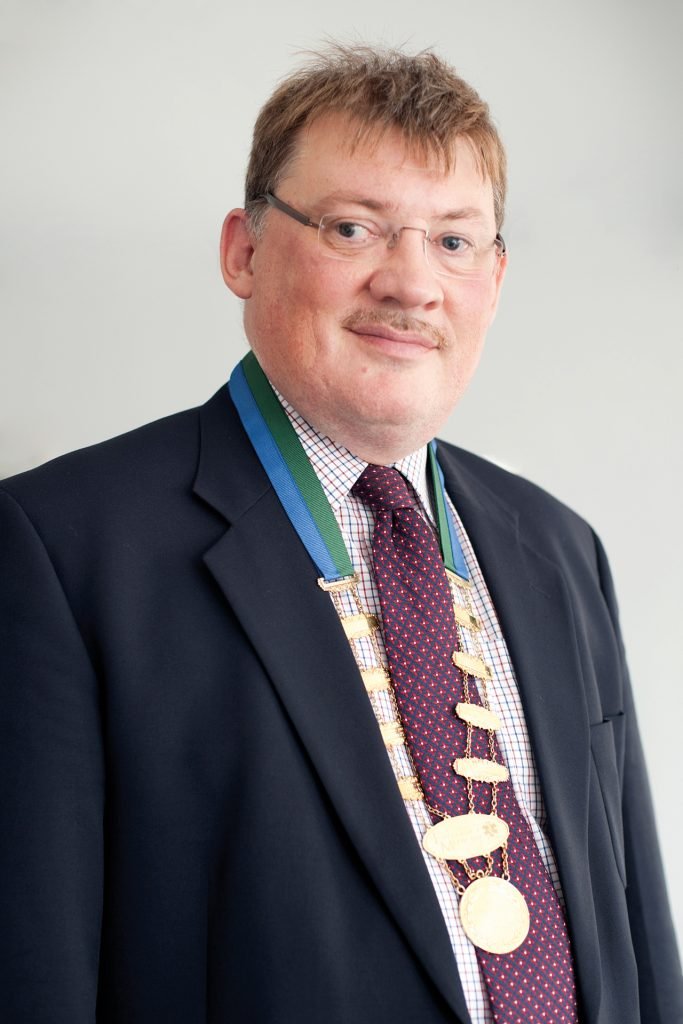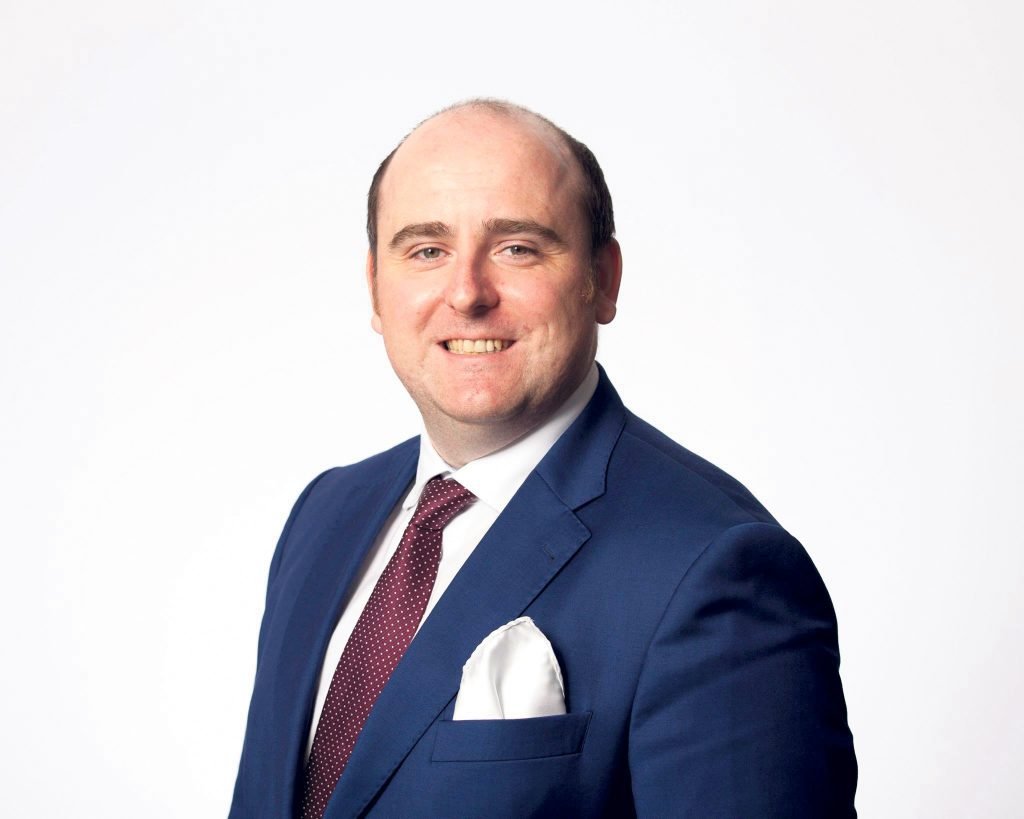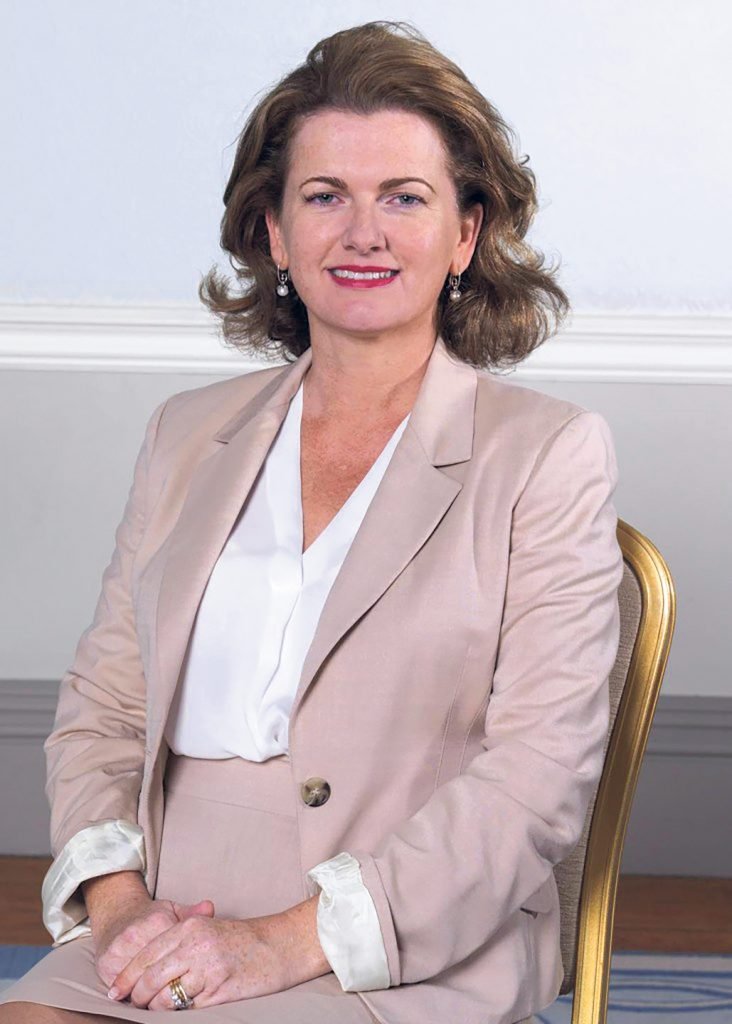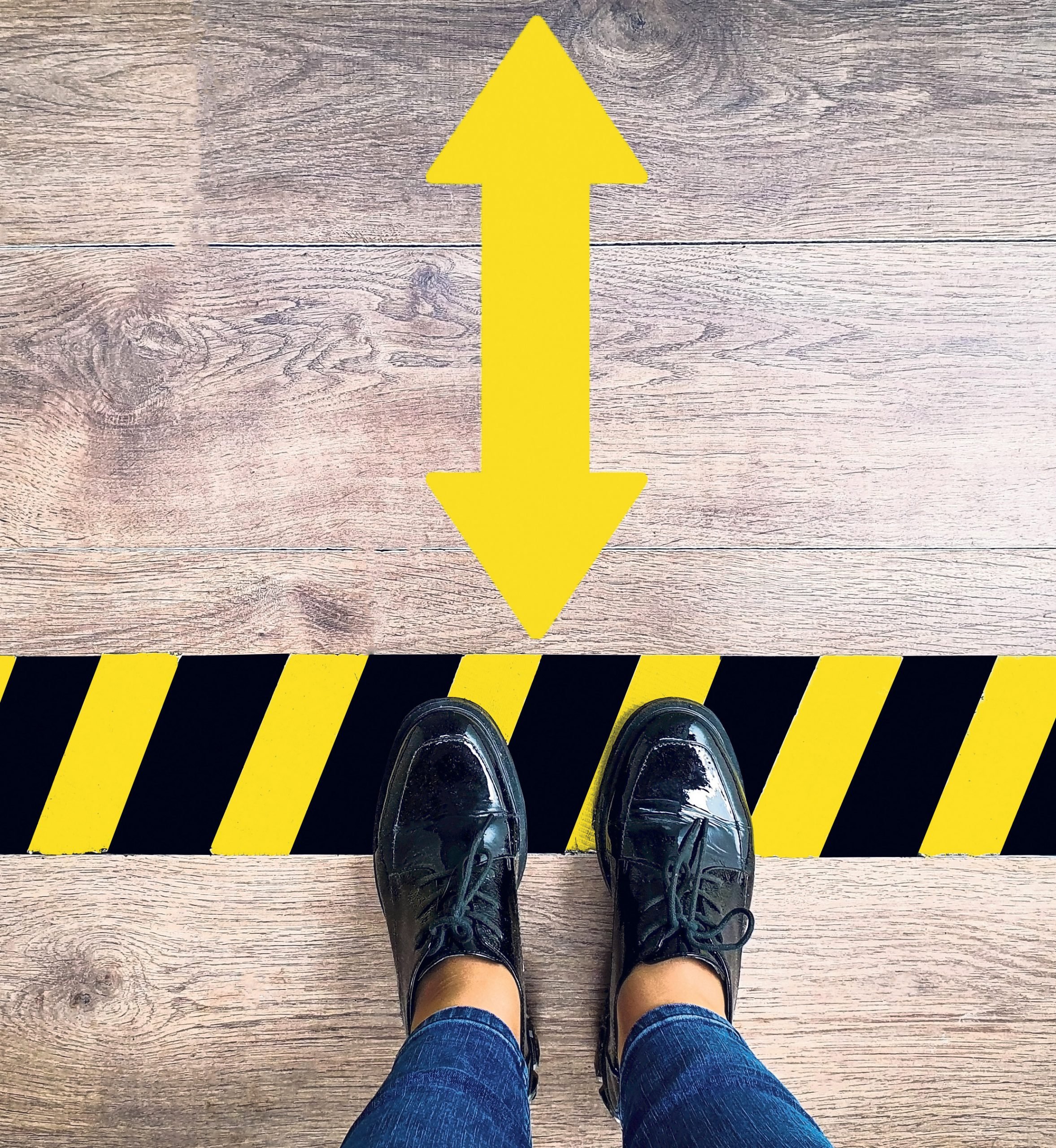Irish hospitals have suffered from chronic overcrowding for a number of years. Now that patient attendances are returning to pre-pandemic levels, there is mounting concern that emergency departments will find it impossible to adhere to physical distancing guidelines, placing patients and staff at risk. Paul Mulholland reports
Consultant in Emergency Medicine at Sligo University Hospital Dr Fergal Hickey is concerned.
As the country reopens, activity in the country’s emergency departments (EDs) is returning to pre-pandemic levels. Given deficits in capacity and service configuration, EDs will not be able to meet physical distancing stipulations unless swift action is taken, according to the Sligo consultant. Speaking last month to the Medical Independent (MI), Dr Hickey was critical of the lack of planning on the issue, especially given the details announced for lifting the lockdown in other branches of society.

“We have rules and regulations, perfectly necessary and appropriate rules and regulations, about how you are going to get your hair cut, how you are going to go to a pub, how you are going to go to a restaurant,” he said.
“But when it comes to a sick group of patients, a vulnerable group of patients, we are just expecting that normal service will be restored. And when I say ‘normal service’, I mean the very abnormal situation of emergency department overcrowding. It is absolutely crazy.”
Fall in activity
The first full week of 2020 was the “worst ever week for overcrowding”, according to an analysis released by the Irish Nurses and Midwives Organisation (INMO). Between 6-10 January, 3,143 patients went without beds, the INMO stated. On two days during the week, the daily figure stood at 760, which was another unwanted record. The hospitals with the greatest number of patients on trolleys were: University Hospital Limerick (UHL) (322); University Hospital Galway (212); Cork University Hospital (210), and South Tipperary General Hospital (210).
At the end of January, the INMO announced that 12,024 admitted patients did not have access to a bed, which was “the second worst” figure on record.
However, the arrival of Covid-19 saw the picture change dramatically. For instance, on 27 March, only eight patients were on trolleys. This compared to 534 for the same date the previous year.
At the time, the Irish Association for Emergency Medicine (IAEM) outlined the reasons for this decline. These included a reduced number of ED attendances due to fewer episodes of injury, infection and exacerbations of chronic conditions in the community as a result of the cancellation of mass gatherings, closure of venues and social distancing; the cancellation of scheduled non-emergency work in the healthcare system resulting in the dedication of the entire bed stock to emergency care; and the “hard work of staff in all areas of the health system to concentrate on and optimise patient flow”.
In spite of reduced attendances, it was still a very demanding time for emergency medicine physicians as they responded to the new challenges brought by Covid-19, with social media playing a notable role in keeping the specialty up-to-date with constantly evolving evidence (see panel).
There was also concern that patients, in particular older persons, were not seeking hospital care for conditions which required urgent medical intervention, but relief that the acute system was not overwhelmed, given the existing capacity deficit.
Limerick
As hospitals adjusted to the new reality, the shadow of overcrowding returned, with the INMO stating on 14 May that 42 patients were on trolleys in UHL. This was more than half of all patients on trolleys across the country on that day. The Organisation pointed out that hospital overcrowding in the current Covid-19 pandemic was especially dangerous, as it increased risk of infection and transmission of the virus, while also posing a health and safety risk for critical frontline staff.
When asked what actions UHL was taking to prevent overcrowding, a spokesperson for the UL Hospitals Group (ULHG) said pathways were being amended to support gradual resumption of activity.
“Separate pathways for suspect Covid and non-Covid patients in ED will be maintained, as will distancing,” stated the spokesperson.
“This will be supported by daily transfer of patients to our Model 2 sites, and to the intermediate care facility at the University of Limerick, which is suitable for non-Covid or post-Covid patients who need ongoing care and who would benefit from further rehabilitation before discharge.
“There are also four new-build projects underway that will deliver up to 122 new beds for the region, including a 60-bed block at UHL, due for completion before the end of the year; two single-room ensuite blocks (one 24-bed, one 14-bed) to be ready at UHL by late summer; and a 24-bed single-room ensuite block at Croom Orthopaedic Hospital, also due for completion by the end of the summer.”
IMO NCHD committee Chair and emergency medicine trainee in UHL, Dr Paddy Hillery, offered a positive assessment of how the hospital had coped so far during the crisis.
“We’ve been operating streaming since early in the process and it has worked well, although we’ve had increased activity,” Dr Hillery told MI last month.
“Thankfully, not large numbers are languishing on trolleys. Unfortunately, there are longer stays in the department due to the fact that the hospital is full, but we need to make sure that doesn’t happen. I know there are other resources to try and facilitate that. We need to make sure that the hospital continues to discharge quickly so that patients coming into the emergency department, who need to be admitted, don’t need to stay for long periods and can go to a bed promptly and avoid this outbreak.”

However, Dr Hillery emphasised there was an urgent need to address the lack of capacity in ULHG and across the acute sector, as hospital attendances continued to rise.
“The first thing is to acknowledge that we have capacity issues in this Group, and to deal with it, we need to increase the bed numbers over a long period,” he stated.
“But we need to be doing modular build to get beds available now. In the depths of winter when we have large numbers waiting around, we need enough hospital beds so that people can actually go to them as opposed to sitting around in the emergency department waiting to be admitted.”
IAEM recommendations
In early May, the IAEM published a short document titled Resetting care in Ireland’s emergency departments as a result of Covid-19. In the document, the Association outlined three principles for future ED care. The first is that EDs cannot be allowed to become reservoirs of nosocomial infection. For this to occur, ED infrastructure must be upgraded to allow physical distancing for staff and patients and allow segregation/isolation of those with infectious disease.
Staffing in EDs must be adequate to compensate for the extra time required in certain patient encounters in safely putting on and taking off personal protective equipment. The second principle is that EDs cannot be allowed to become overcrowded again and that the existing HSE target of 95 per cent of patients spending less than six hours in the ED from arrival to departure needs to be achieved. The final principle is that pathways to treat patients outside the hospital setting should be consolidated and significantly enhanced.
IAEM President Dr Emily O’Conor told MI the recommendations had received a positive response from HSE management. She said HSE Director for Acute Operations Mr Liam Woods assured the Association that overcrowding would not be tolerated. However, she was concerned about the lack of detail on how precisely this would be achieved in the context of the pandemic.
“The only reason that emergency departments coped over the last number of months was because attendances dropped off,” according to Dr O’Conor, Consultant in Emergency Medicine at Connolly Hospital, Blanchardstown.
“We were given extra space and resources to look after those patients that did come. Attendances now are back up to normal or almost normal and hospitals are also trying to resume scheduled care. There is lots of discussion going on at the moment, and challenges, but there isn’t a clear implementation roadmap yet as to how we are going to manage capacity-wise in the coming months.”

Dr O’Conor acknowledged that many EDs were struggling to adhere to current physical distancing guidelines and had patients waiting on trolleys. She also admitted to “tension” between hospital departments due to the rise in activity levels.
“There is tension happening in many hospitals at the moment between specialties that are trying to deliver scheduled care, and want their space back, and emergency medicine, which still needs that space so we can socially distance and isolate patients,” she said.
Like Dr Hillery, she said modular builds would be useful over the short term. But a longer-term strategy for building capacity is also needed.
“Unfortunately, we don’t know where the money is going to come from because there are going to be a lot of competing demands,” Dr O’Conor said.
“All we can do is push for the demands of patients in emergency departments to be higher up the list of priorities, which is what everyone is trying to do.”
Her colleague in the IAEM, Dr Hickey, said a plan is needed immediately for the rise in ED attendances over the winter period. He said no ED in the country is currently fit-for-purpose to address the challenges posed by the pandemic. Dr Hickey said there was a big difference between HSE management stating overcrowding would not be tolerated, and doing something about it.
“When the summer passes, if there aren’t significant steps taken to address the capacity constraint, then we are going to have even larger numbers of people on trolleys than ever and it is going to be deemed to be dangerous,” according to Dr Hickey.
“And I think the reality will be, the public will now understand for the first time just how dangerous it is. So it has always been dangerous, but now you have got the added risk that you may contract coronavirus from somebody. Staff can get it from patients; patients can get it from patients. You are essentially allowing people to congregate in circumstances where they would not be allowed to
congregate elsewhere.”
Dr Hickey said there could be legal implications for the HSE or the State if patients contracted Covid-19 through unsafe conditions as a result of overcrowding.
A HSE spokesperson told this newspaper that work had commenced on the planning of services, with a particular emphasis on ensuring the health service was as prepared as possible for a second surge of Covid-19 and the onset of winter.
“In due course, the Hospital Groups and Community Healthcare Organisations will be developing plans to address the challenges faced in their areas and identify what additional supports are required,” according to the spokesperson.
Dr Hickey referred to the fact that Ireland was already below the OECD average of 4.7 hospital beds per 1,000 people. The Health Service Capacity Review 2018 stated that the health service required at least 2,600 beds by 2031, although this could rise to 7,000 if the HSE was not reformed. The emergence of Covid-19 has now further complicated the situation.
Dr Hickey pointed to the sanatoria built in response to the tuberculosis crisis when Dr Noel Browne was Minister for Health as evidence that a substantial building programme can happen when there is sufficient political will.
“We need to create capacity, it’s as simple as that,” he said. “Some of that can be created with modular accommodation in the short term, but some of it requires substantial building. So be it; it needs to be done. Condemning patients to really bad outcomes by ignoring the realities is not going to
achieve anything.”
Social media in a time of emergency
Social media has played a key role in keeping medical professionals on top of the latest Covid-19 evidence and research, especially at the beginning of the pandemic when little was known about the novel coronavirus. Social media can be especially beneficial to the fast-moving world of emergency medicine, according to Irish Association for Emergency Medicine President Dr Emily O’Conor.
“Because we are the open access part of the health service, and operate on a 24/7 basis, there is no filter between us and what is happening in our communities,” Dr O’Conor told MI.
“Changes in practice can’t be put off until after the weekend. We have to respond immediately.”
Emergency medicine has been at the forefront of the Free Open Access Meducation (FOAM) movement, and since 2013 has been hosting Social Media and Critical Care (SMACC) conferences.
Dr O’Conor said that while social media and apps, such as WhatsApp, have been increasingly used by emergency medicine doctors, the pandemic accelerated this process.
“During the initial few weeks, the information changed very rapidly, from NPHET [national public health emergency team] and from the HPSC [Health Protection Surveillance Centre], ” she said.
“In many ways we used social media to keep up-to-date with those changes, and sometimes that happened even in advance of the information being communicated through HSE central through traditional formats such as email.
“We used it to communicate both official guidance and international best practice, but also to communicate with each other, individual departments and the challenges they were facing. We found it very useful.”
Dr Cian McDermott, Consultant in Emergency Medicine at the Mater Misericordiae University Hospital, Dublin, said interactions between doctors on social media have been helpful regarding the use of ultrasound in diagnosing potential cases of Covid-19.
“The swab test takes 24 hours, up to four days, certainly at the early phase it took seven days,” said Dr McDermott, who was on the organising committee for smacc.net.au for several years.
“A chest x-ray is wrong sometimes, it’s right sometimes. Bringing someone through a CT scan is very resource-intensive; you can’t do that for every patient. But as the treating doctor at the frontline, I can take my ultrasound probe, put it on their chest and, with a high level of accuracy, I can tell you whether they do or don’t have this disease. That had never been done before and I spent the last three months interacting with people in Italy, in the States, in Australia, about how to apply that.”
More generally, he said that social media was also useful in revealing that many Covid-19 patients would be able to manage on low oxygen levels and, contrary to the early assumption, did not need ventilators.
“So that changed within a couple of days from some of the experiences people were having and posting about in the big centres in the US. That was well-documented.”
Dr McDermott acknowledged there was criticism that information posted on social media, even by expert users, was not peer reviewed. While it was not peer reviewed in the traditional sense, he pointed out that it was challenged by other colleagues. However, the volume of information posted during the pandemic made the process of discerning the correct information more difficult.
“If an [online] article is good and it is useful, it is talked about and it is run with, whereas if it isn’t useful it is discredited by the people that are consuming and using it,” said Dr McDermott.
“And we found that one of the problems with this pandemic was that there was such an amount of information out there, it is hard to sift out the noise and to know what is the best information to run with and know what to base your practices on. You just have to be very careful what you listen to, and only use trusted sources.”
Overall, he was positive about the impact of social media on the speciality.
“I get half the information that my colleagues who admit the patients to the wards or the ICU I’m dealing with get. I often think that emergency medicine is like practising medicine with one eye closed and one arm tied behind your back in trying to get the most reasonable set of answers. If we have any tool that gives us a bit more data like social media or information coming from other sources, it is hugely beneficial.”












Leave a Reply
You must be logged in to post a comment.